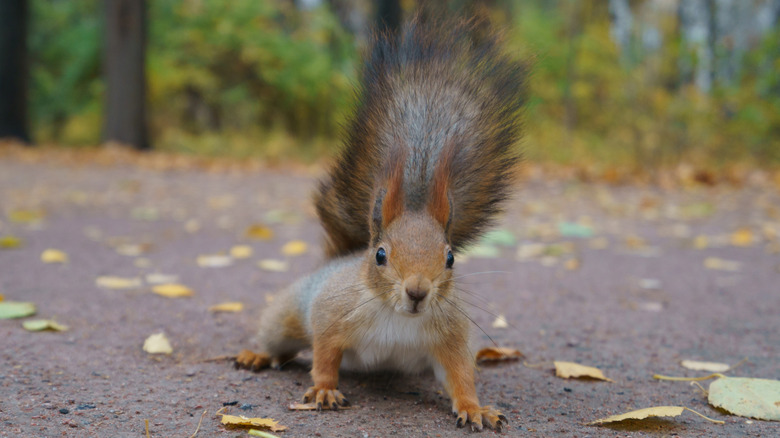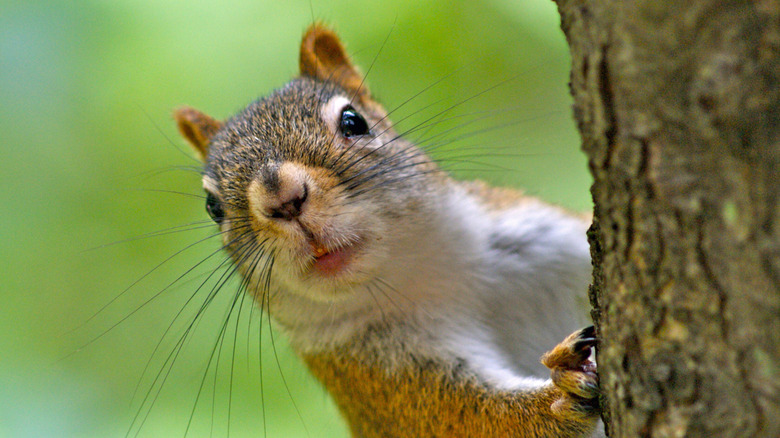The Tragic Reason Why Squirrels Run In Front Of Cars
Squirrels are some of the cutest rodents, but they also have some of the most quirky behaviors. For instance, nuts are one of the foods squirrels eat, and they can stash an impressive amount and even organize the cache carefully by preference, quality, and variety. Another of their most well-known behaviors is running in front of oncoming vehicles, which can be tragic for both the squirrels and the drivers who try to swerve around them. It's as if they're waiting on the side of the road and playing a game with oncoming traffic. However, did you know that this behavior is actually a defensive tactic?
An estimated 41 million squirrels die on United States roadways every year (per Animal People Newspaper via WorldAtlas), which makes them one of the most frequently "road-killed" animals. With impeccable reflexes, the rodents zigzag across the road, changing direction quickly and efficiently. This behavior is an instinctual response that's ideal for evading predators that eat squirrels in the food chain, such as domestic cats, large birds, and snakes. However, it's not so ideal for avoiding speeding vehicles, especially if the squirrels freeze momentarily and attempt to run back from where they came. Even with their amazing reflexes, cars simply move too fast for the animals to get out of the way in time.
Squirrels aren't the only animals that use the defensive zigzag behavior to avoid being caught by predators. Zebras, deer, and rabbits are just a few examples of other mammals that use the same tactic. Because of that, it's not so surprising that 350,000 deer are estimated to be roadkill in the United States each year.
The defensive behavior is only one piece of the puzzle
While the defensive zigzag behavior of squirrels makes it difficult for drivers to avoid running over them, it's only one reason why they often meet tragic ends under the wheels of cars. You might think that squirrels run into the road because they have poor peripheral vision. On the contrary, the eyes of all types of squirrels are generally located on the sides of their heads, so they have better peripheral eyesight than humans. They can even see partially behind them, which allows them to detect predators that approach them from behind.
There's a disadvantage to squirrels' eyes being in that position, though. Since their eyesight doesn't overlap like human eyes (because ours face forward on our heads), the rodents don't have the acute depth perception that most primates have. That depth perception is necessary for judging how quickly objects like speeding vehicles are approaching. Without it, squirrels are terrible at being able to tell how close a moving car is before they bolt across the road or attempt to turn back — even though they bob and weave to scan their environment constantly to determine distances. The animals simply haven't had enough time to adapt to automobiles because, in the grand scheme of evolution, vehicles haven't been around for very long.

